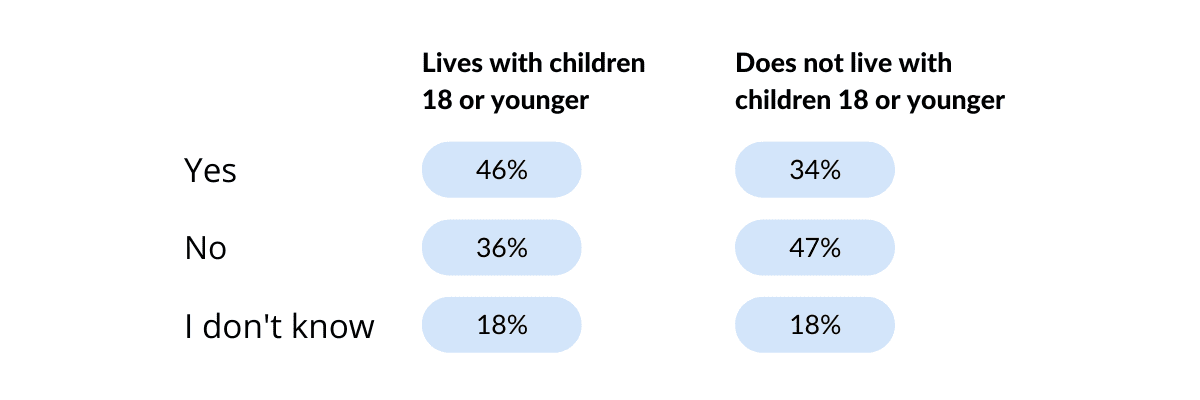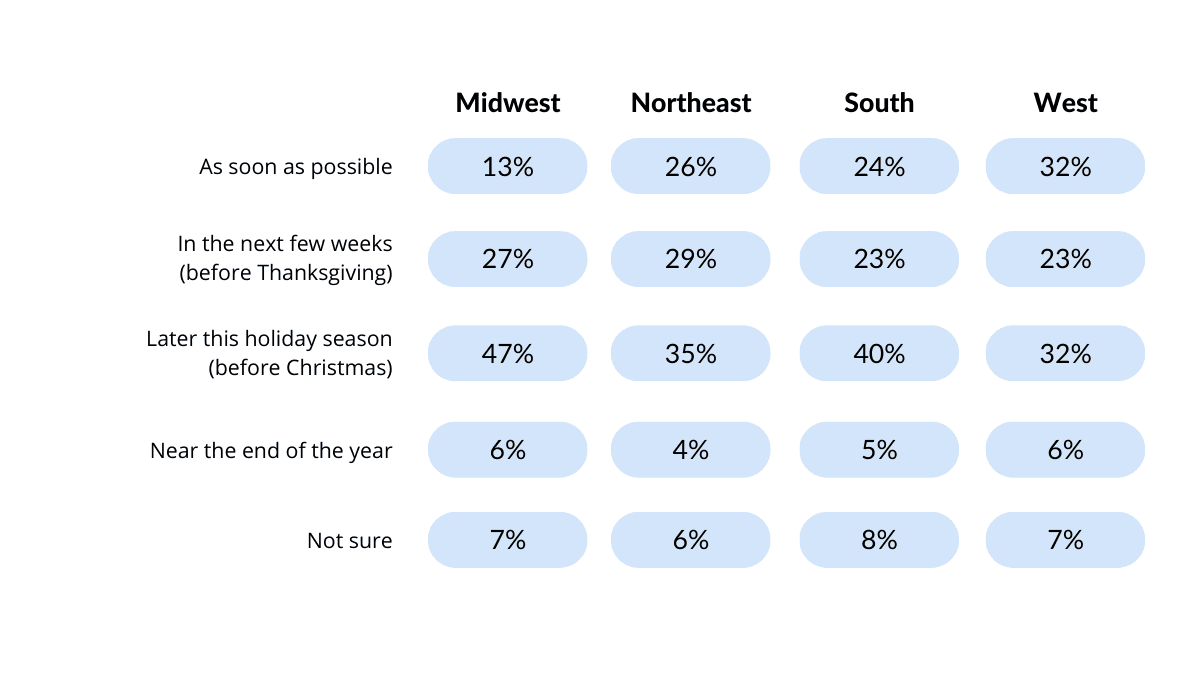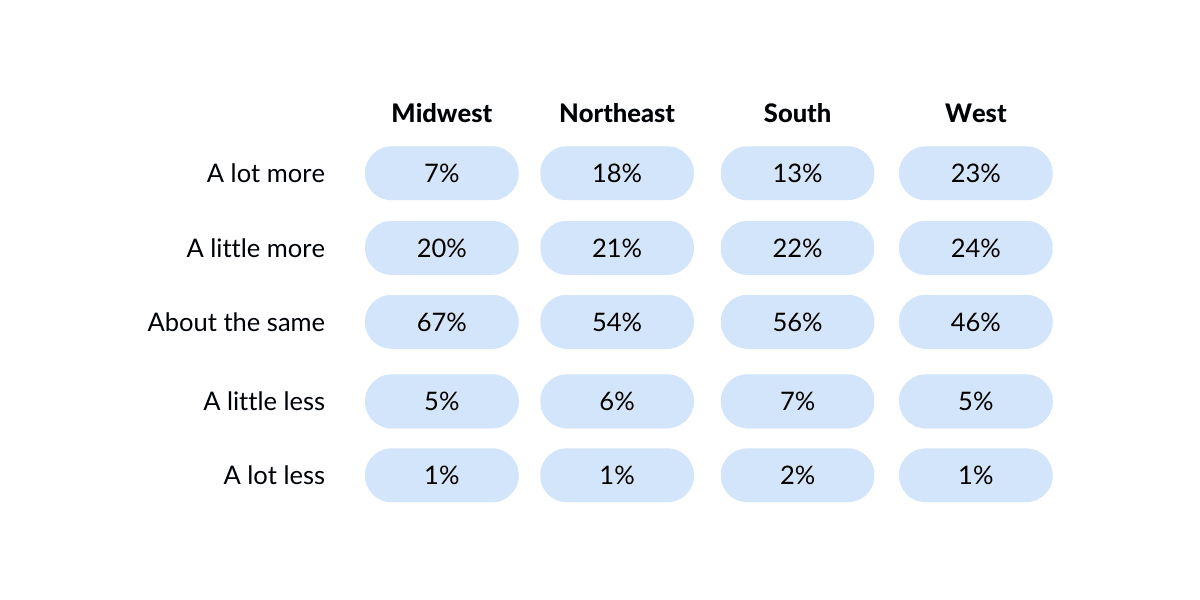Take a look at our 2021 Nonprofit Giving Research Report 2021 Holiday Giving Season: Donor Research Access the Report Research Report Inflation remains one of 2022’s signature storylines as Americans…
Take a look at our 2022 Nonprofit Giving Research Report
The holiday season has officially arrived, and for nonprofits, it’s the most critical time of the year. More than one-third of all charitable giving is done in the last three months of the year, with as much as 18% coming in December alone.
While most nonprofits finalized their 2021 holiday outreach strategies months ago, the American public doesn’t plan nearly that far ahead. So with the holiday giving season ramping up, Civis Analytics recently surveyed nearly 2,000 Americans to help nonprofits better understand what donors are thinking and feeling as 2021 winds down: who’s planning to give this season, how much they’re planning to donate, which types of organizations they’re likely to support, and so on.
This is information that nonprofits can use to gut check and course correct — to adapt their seasonal outreach strategies on the fly in order to more effectively seize opportunities to engage the people whose support matters most. Read on, or use the table of contents below to jump ahead.
Who will be donating in 2021?
There are countless factors that influence a person’s propensity to give, so we asked one basic question to get us started:
Do you plan to donate money to a nonprofit organization during the holiday season (November and December) of 2021?
We found 38% of respondents plan to make a charitable donation during the 2021 holiday giving season. While 44% of respondents do not plan to donate this year, 18% of respondents are still undecided.
When it comes to making donations over the holiday season, the gender gap is virtually nonexistent. Nearly identical numbers of females and males plan to donate (38% and 39% of respondents, respectively).

When looking at respondents by age, we see that 48% of respondents 65 or older plan to donate in 2021, while every other age group comes in below the total sample. On the opposite end of the spectrum, 46% of respondents in the 35 to 49 age group do not intend to donate. Respondents who haven’t made up their mind skew younger, though they’re fairly well represented in every category.

At what point on the salary scale are higher earners more likely to donate than average? Based on our findings, it happens at the $75,000+ mark, though individuals in the $50,000–$75,000 range are very close as well.

Nonprofits that know their donors’ marital and parental status should definitely consider those factors when fine-tuning their holiday giving strategy. Married respondents and respondents living with children 18 years or younger are significantly more likely to donate in 2021.


Overall, respondents in the Midwest and Northeast regions are more likely to give in 2021, though as we’ll see throughout this report, individuals located in the western U.S. are feeling charitable as well.

How many charities will donors support?
Thirty-eight percent of the giving public plans to donate over the giving season, but no matter how kind-hearted they are, people can only support so many organizations. We wanted to determine who is most likely to support multiple organizations over the 2021 holiday season (making them a potential target for last-minute outreach), so we asked the following question:
If you do plan to donate money during the upcoming holiday season, how many organizations do you think you’ll donate to?
We found that most people plan to donate to two organizations. This answer was remarkably consistent across variables like gender, race, age, education, etc. But as with our prior findings, there are additional opportunities for nonprofits to explore out west. The majority of people from this region still intend to donate to only two organizations, but the percentage of respondents who plan to support three or more was higher than in any other locale.

What kinds of charities will donors support?
Knowing which causes people support helps nonprofits better understand who to target over the giving season, so we asked the following question:
If you do plan to donate money during the upcoming holiday season, what kind of organization(s) will you support? Select all that apply.
Overall, the Human Services category came out on top, with 40.83% of respondents planning to give to an organization in this space. This beat out the Health category (40.60%) by a fraction of a percent. The Animals (32%), Religion (31%), and Human and Civil Rights (23%) categories rounded out the top five. The breakdown of all 12 categories can be found below.

Exploring responses by age group leads to an interesting mix of results. First (and perhaps least surprising) among them: people love animals. This category ranked in or near the top five for every group. So too did the Human Services and Health categories, and while the Arts, Culture and the Humanities and Religion categories didn’t break the top five for every cohort, they enjoyed strong support amongst all age groups.

But several categories may be very reliant on younger donors during the 2021 holiday giving season. The Environment, Education, Human and Civil Rights, and Community Development categories skew young, with the majority of people that plan to support these sectors aged 50 or lower. Furthermore, we see that people 18 to 49 years of age intend to spread their donations across a significantly wider array of categories than older donors.
When do donors plan to give?
To understand when nonprofits can expect the majority of their holiday 2021 donations to roll in, we asked the following question:
If you do plan to donate during the upcoming holiday season, when will you make your donation?
We found that most people plan to donate later in the holiday season, but still give before Christmas. That being said, a large portion of people planned to donate by Thanksgiving, or “as soon as possible.”

This question produced one of the largest gender gaps in the survey. Based on our findings, males who plan to donate in 2021 intend to do so as soon as possible, while females are more likely to wait.

There are also some notable differences based on location. Respondents from the Midwest and South regions, for example, are more likely to defer their donations a few weeks longer than the national average, while their counterparts in the West and Northeast are more likely to donate sooner.

Who will give more (or less) in 2021?
Knowing who is planning to donate is important, but knowing how much they’re planning to donate (at least directionally) can put your results over the top. It’s never too late to shift on the fly if opportunity presents itself, and with that in mind, we asked the following question:
Thinking about the upcoming holiday season, are you planning to donate more, less, or about the same amount as last year?
All together, 37% of respondents plan to donate more than last year, with 22% planning to donate “a little more” and 15% planning to donate “a lot more.” Males are more likely to increase their giving in 2021, with 46% planning to increase their donations relative to 2020, compared with 28% of females.

Younger people are more likely to increase their charitable giving in 2021, with the 18-to-34 age group the likeliest to donate “a lot more.” People 50 years of age or higher, on the other hand, are more likely to donate the same or less than they did the previous year.

College graduates with advanced, bachelor’s, and associate degrees are more likely to increase their giving this year, coming in at 46%, 36% and 43%, respectively. Interestingly, those with the least formal education (i.e., no high school degree) are more likely to increase their giving than individuals with only a high school degree or some college education.

Earlier we noted that $75,000 was the general salary threshold at which people are more likely to donate, and it’s also the threshold at which people are willing to donate more year over year. People earning above $75,000 per year are significantly more likely to give “a lot more” than those below that threshold. For those planning to give “a little more” in 2021, the threshold lowers to $50,000. As with education, those earning the very least (less than $25,000 per year) are more likely to increase their giving relative to individuals making slightly more ($25,000–$50,000).

Geographically, nonprofits seeking to solicit bigger donations over the 2021 holiday season should look to the west. Forty-seven percent of respondents in the western U.S. plan to give more in 2021, making this the most philanthropic region of the country, while most respondents who plan to give less in 2021 hail from the southern U.S.

What we’ve learned about donors likely to donate more or less in 2021
Whether the goal is increasing donations year-over-year or preventing donations from decreasing, it’s important nonprofits understand whom they should be engaging over the final weeks of the giving season. Our research uncovered the following donor profile attributes:
Likely to Give More in 2021
- Gender: Male
- Age: Younger (18–34, 35–49)
- Education: Higher levels (associate, bachelor’s, advanced)
- Annual income: Above $75,000
- Marital status: Never married
- Location: Urban areas in the western U.S.
Likely to Give Less in 2021
- Gender: Female
- Age: Older (50–64, 65+)
- Education: Lower levels (some college at most)
- Annual income: Below $50,000
- Marital status: Never married
- Location: Rural areas in the southern U.S.
Wrapping up
As with any outreach campaign, it’s never too late to improve your holiday giving strategy. While we certainly hope your efforts are off to a strong start, the data in this report can be used to help you adjust your approach or capitalize on new opportunities.
This report also demonstrates the level of nuance and context that nonprofits and other organizations can unlock by analyzing their first-party data. For example, we saw the role factors like gender, age, education, and marital status can play in an individual’s propensity to give. This is personal information that your donors choose to share with you, and it can inform all aspects of your fundraising messaging throughout the calendar year; if you don’t properly collect and consolidate this data, however, you can’t hope to benefit from it.
Ending a holiday-themed article by proposing a New Year’s Resolution may seem trite, but if nothing else, make 2022 the year your organization gets serious about its first-party data strategy. There’s never a bad time to get started, and even small steps can make an outsized impact on your results.



